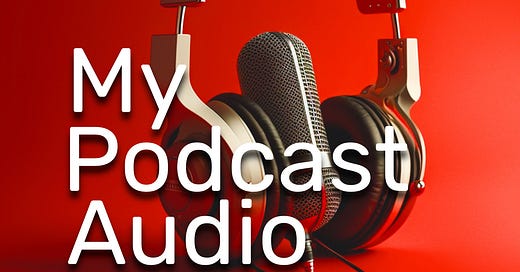The Secret to Better Sounding Podcasts: Tackling Plosives for cleaner audio
How to deal with plosives
Have you ever listened to a podcast where certain words hit your ears like a sudden gust of wind? That sharp, jarring “pop” sound is caused by plosives—those pesky bursts of air that happen when saying words with hard consonants like “p” and “b.” While they might seem like a minor annoyance, plosives can distract listeners from your message and reduce the overall professionalism of your podcast. Let’s explore why editing plosives matters and how to keep your episodes sounding polished.
Why Should You Care About Plosives?
Podcasts are all about connecting with your audience through your voice. A clean, professional sound helps build credibility and keeps listeners engaged. Plosives create harsh spikes in your audio, making it difficult to enjoy the content, especially when listening on headphones. Addressing plosives ensures your message is heard clearly and comfortably—key factors for retaining an audience and leaving a positive impression.
Techniques to Prevent Plosives Before Recording
The best way to deal with plosives is to prevent them from happening in the first place. Here are some simple but effective techniques:
1. **Use a Pop Filter:** A pop filter is a mesh screen that sits between your mouth and the microphone. It disperses the air from plosive sounds, reducing the harshness.
2. **Position Your Microphone Properly:** Instead of speaking directly into the microphone, angle it slightly off to the side or position it below or above your mouth. This helps redirect the burst of air away from the mic.
3. **Maintain Proper Distance:** Staying 6–12 inches away from the microphone provides enough space to reduce plosive impact while keeping your voice clear.
Fixing Plosives in Post-Production
If plosives sneak into your recording despite your best efforts, post-production tools can help smooth them out:
1. **Manually Edit the Audio:** Zoom in on the waveform where the plosive occurs. You’ll notice a sharp spike—reduce its volume to soften the impact. Be careful not to alter the surrounding audio too much.
2. **Use De-Plosive Plugins:** Many audio editing programs, like Logic Pro, Audacity, and Adobe Audition, have de-plosive tools or plugins designed to automatically detect and reduce plosive sounds.
3. **Apply a High-Pass Filter:** Setting a high-pass filter around 80–100 Hz can help remove some of the low-frequency “thump” associated with plosives without affecting the overall quality of your voice.
Wrapping It Up
Plosives may seem like a small detail, but they have a significant impact on your podcast’s sound quality. By combining smart recording techniques with a few post-production tricks, you can create an audio experience that’s easy on the ears. Your audience will appreciate the clarity, and you’ll elevate the professionalism of your content.







I learned something new today! I used Davinci to edit my videos and podcast audio and this was something I never considered! Thank you for helping me to level up my audio!